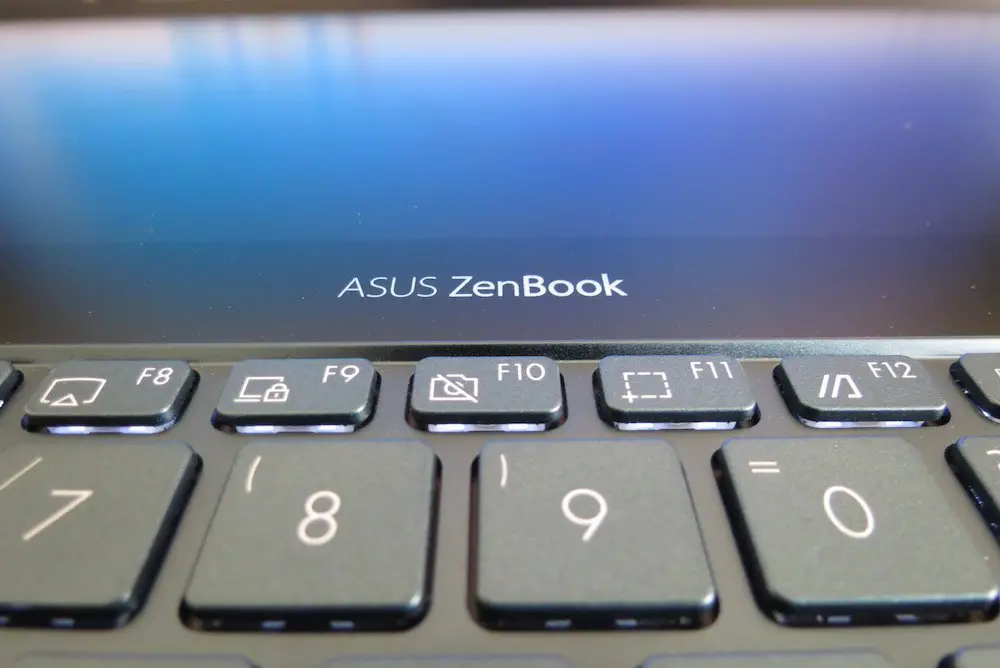Asus has strongly opted to innovate in the space of laptops, trying in this way to detach itself from the traditional formats of computers, this has led to the incorporation of double screens, with the ZenBook Pro Duo being the apex of this new format.
The company wants to further develop this concept and we could see last year’s Computex the Project Precog, a laptop where both the top and bottom were all screens, directly dispensing with the integrated keyboard.
Precisely the ASUS Zenbook Pro Duo it is the logical step of evolution, from the ScreenPad to the Project Precog that will come later.
Specifications (Equipment checked)
- CPU: Intel Core i9-9980HK (8 cores and 16 threads)
- RAM: 32 GB DDR4-2666 integrated
- SSD: 1TB SSD NVME M.2
- GPU: NVIDIA GeForce RTX 2060 6GB GDDR6
- Main screen OLED 15.6 ″ 4K Touch HDR, 100% DCI-P3
- ASUS ScreenPad Plus, 14 ″ 4K (3840 × 1100) touch
- 2 x USB 3.1 Type-A
- 1 x USB 3.1 Type-C
- Thunderbolt 3 (on the USB-C connector)
- 1 x HDMI
- Audio minijack
- Built-in stylus
- WiFi 6, Bluetooth 5.0
- DRUMS: 71 Wh
- DIMENSIONS: 35.9 x 24.6 x 2.4 cm
- WEIGHT: 2.5 KG
- PRICE: $ 2,909,990 (PCFactory.cl)
It is a laptop whose 15.6 ″ 4K OLED screen is complemented by another 14 ″ 4K screen located just below, between the keyboard and the screen itself, to allow us to expand the useful workspace and also allow the use of applications complementary to the team.
All this accompanied by the latest hardware, with a powerful Intel processor Core i9-9980HK and one GeForce RTX 2060, clearly targeting the high-performance notebook market, both for content creators and for those looking for a computer for everything from power-demanding tasks to games.
This is Intel’s top of the line processor for laptops. This while the 10th generation of processors arrives.
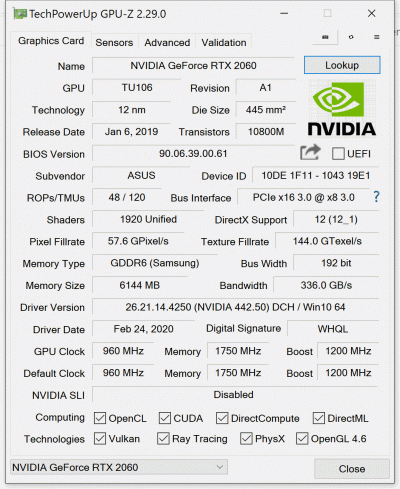
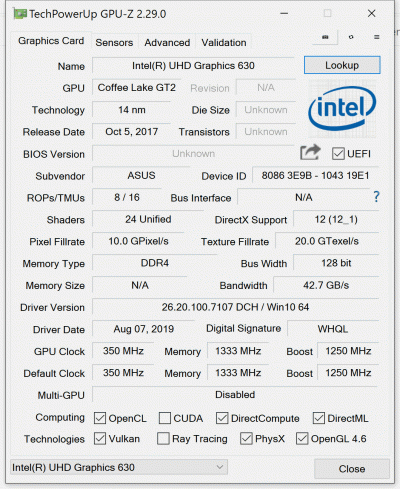
In terms of graphics power, this not being a Gamer team, we do not see it with the top of the line of NVIDIA, but it has an RTX 2060 (not Max-Q), so it ensures decent performance in games at 1080p and good quality.
Design
The model that came to us for review, has a finish in blue tones, although it shares with all ASUS Zenbook Pro Duo its structure and metal casing. With a weight 2.5 kg, it is not a lightweight laptop, and its 2.4 cm thickness takes it away from ultrabooks, in fact, for all intents and purposes, the UX581 is a laptop with size and thickness more typical of the high-performance segment, and its components as well they corroborate it.
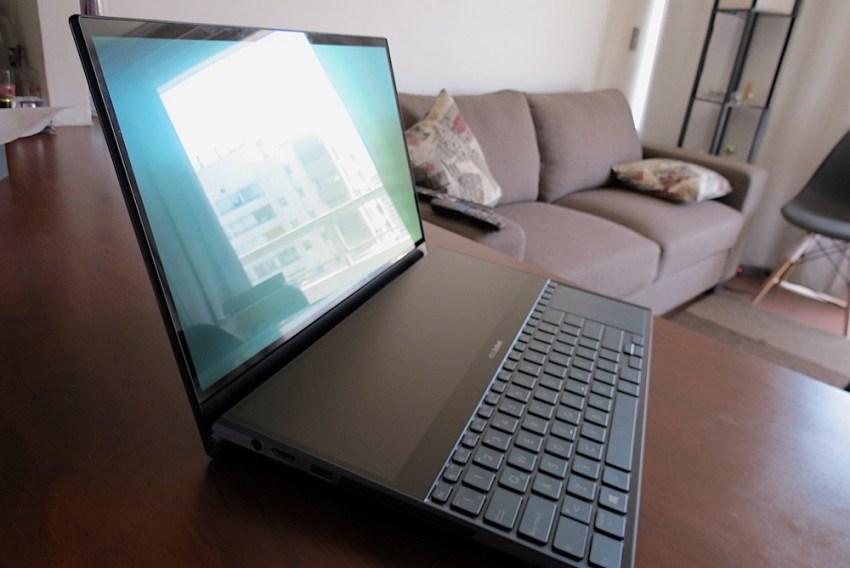
When opening it we can see that the main screen is glossy, that is, it reflects a lot of what is around, although as we will see later, being an OLED panel with good levels of brightness is not something especially worrying even in environments with enough light.
The frames are fairly contained and align with those on the bottom screen or ScreenPad Plus. We can also see that the keyboard is located on the lower edge and that its trackpad is placed on the right.
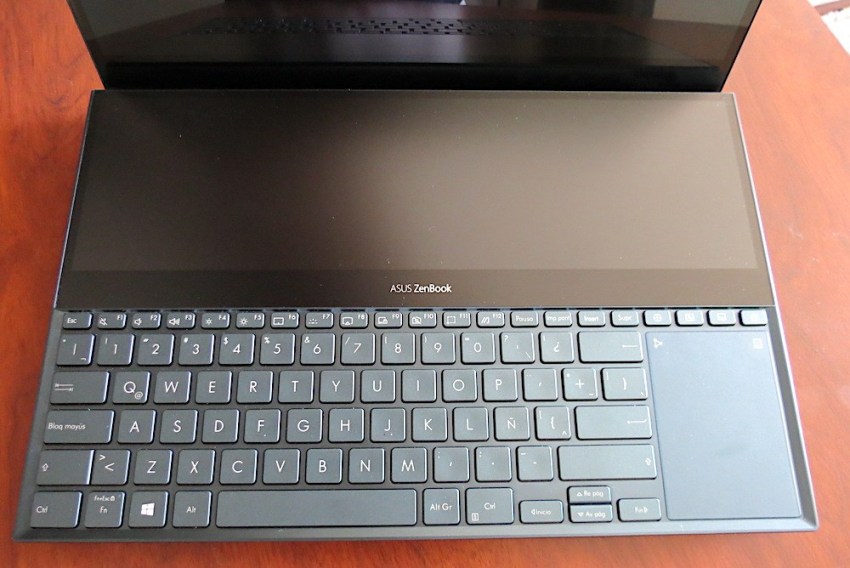
The keyboard is compact due to the inclusion of the second screen. We can say that it is a configuration that requires some adaptation time. The trackpad, next to the keyboard, is one of the things that is difficult to get used to.

On the sides we have a design with marked angles that hide the considerable thickness of the equipment at first glance. On the right side we have a USB-C port with Thunderbolt 3.0, the 3.5mm minijack headphone / microphone audio jack and a USB-A 3.1. The air outlet occupies practically the entire thickness of the equipment.

On the left side we have the power connector, an HDMI and another USB-a, in addition to another air outlet. Despite the 2.4 cm thickness and the fact that it is a 15.6 ″ laptop, it offers a very poor physical connectivity.
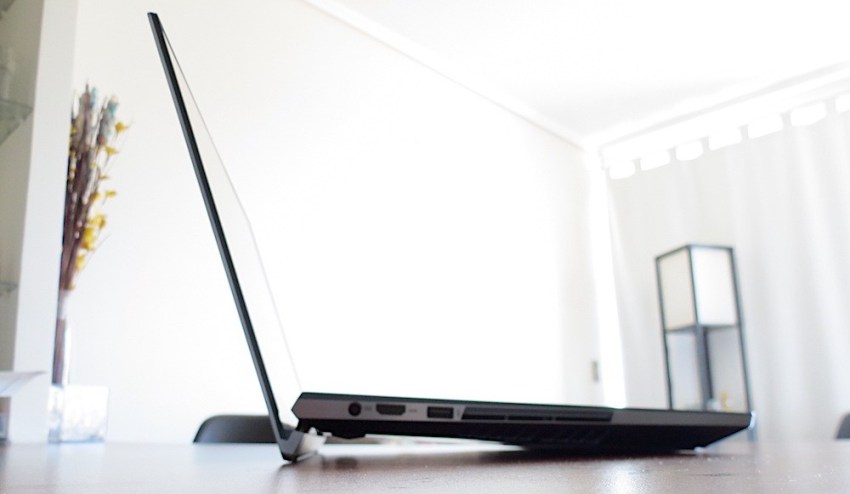
ASUS has taken advantage of the display’s own structure and hinge system to elevate the equipment when opening it, in such a way that it adds inclination to the base and facilitates its use in a more ergonomic way.
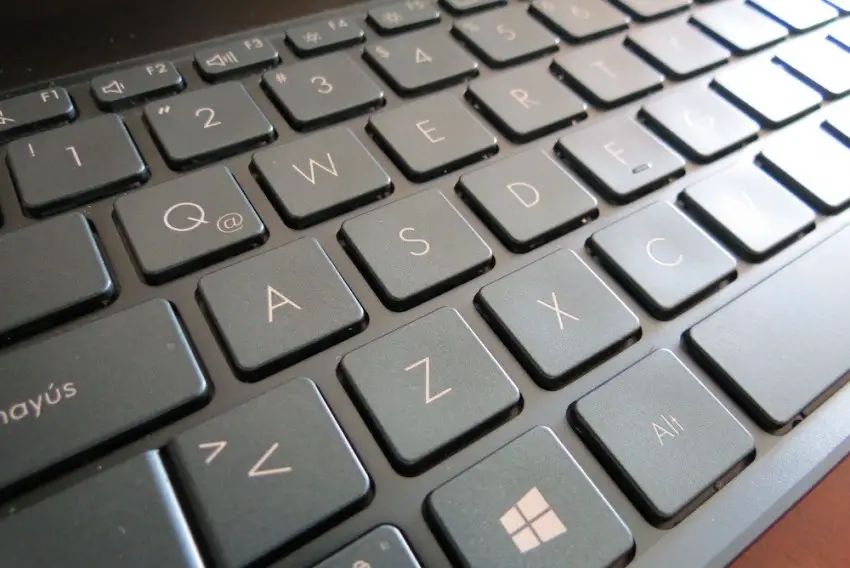
The Zenbook Pro Duo It has a chiclet-type membrane keyboard with a fairly wide key travel, superior to that of most laptops. It is a keyboard with a complete Spanish WASD distribution that uses the trackpad itself, located on the right side, as a numeric keyboard.
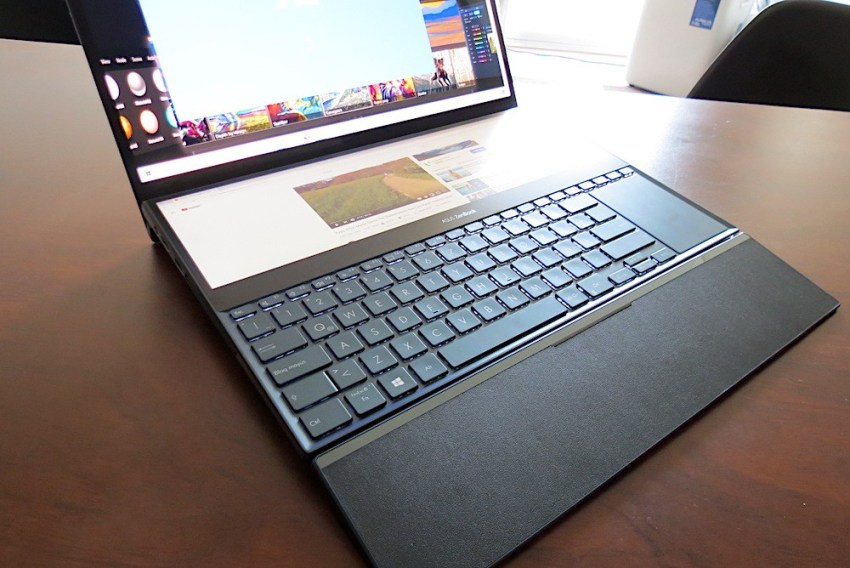
ASUS includes a wrist rest with the Zenbook Pro Duo to facilitate writing comfort. Still, with the inclination of the laptop and the height of the computer itself, it is not uncomfortable to type, the height would correspond more or less to that of a conventional desktop keyboard.
What is somewhat more uncomfortable, at least until you get used to it, is the location of the trackpad, placed to the right of the keyboard. Keep in mind that the two screens of the Zenbook Pro Duo are tactile, but even so, the trackpad is used regularly and, in addition to the position to the right, its format higher than width and its rather contained dimensions do not make them precisely comfortable.
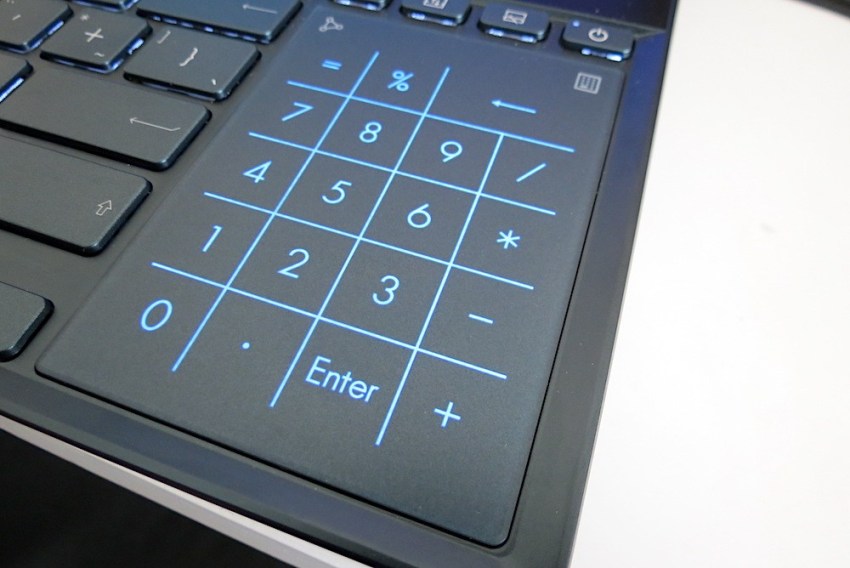
In addition, on the trackpad itself there are two sections to activate the sharing function and the calculator, and it is quite common to inadvertently click in those areas and open applications.
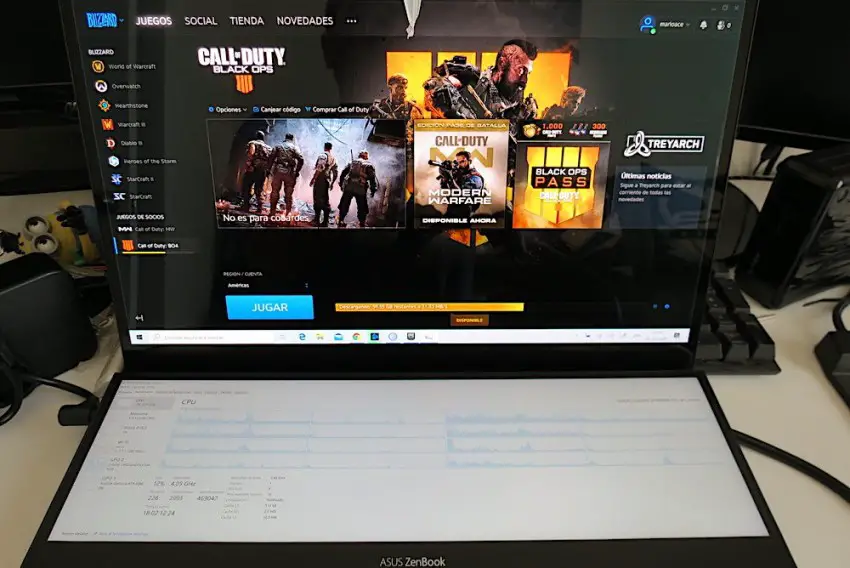
With a diagonal of 15.6 inches, a maximum brightness that exceeds 500 cd / m², 4k resolution, touch recognition and HDR support, the screen of the ASUS Zenbook Pro Duo make it one of the few laptops on the market with an OLED panel.
This assumes that each of the pixels that make up the screen emits its own light, so black is a real black, without light emission, and you can control the brightness of each of the pixels independently, achieving a better color rendering and also a better HDR experience.

This screen has a glossy coating, which means that it tends to reflect light, although its maximum brightness exceeds 520 cd / m² and we will have no problem viewing it in bright environments.
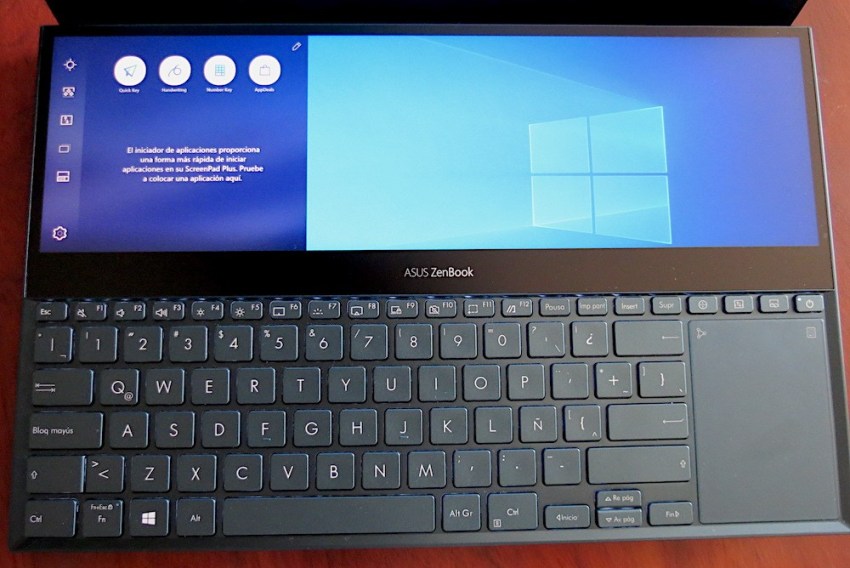
The evolution of the ScreenPad, that small screen integrated into the trackpad of some models of the company, results in this ScreenPad Plus, a screen placed just between the keyboard and the main screen.
It has a resolution 3840 x 1100 pixel 4K and its placement and size make it undoubtedly a much more practical and useful extension than trackpad screenpads.
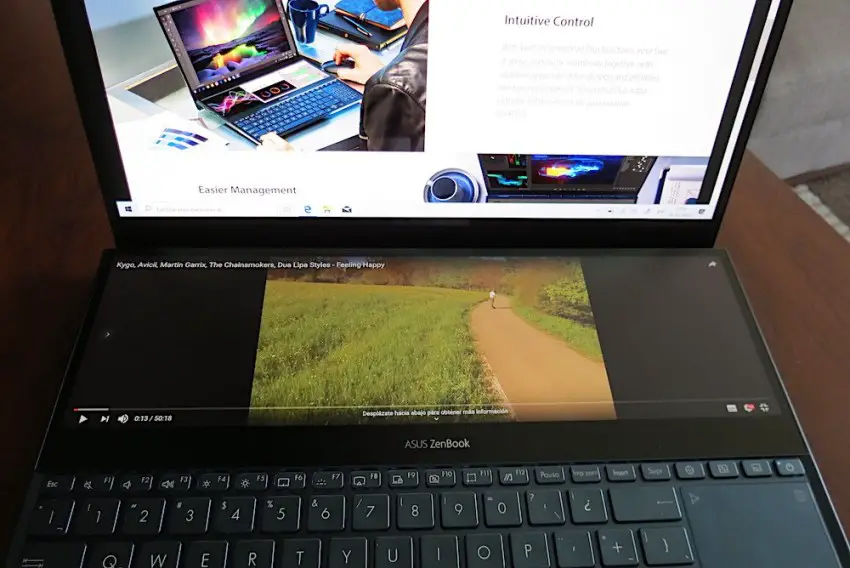
Basically, it is an additional touch screen that extends to the main screen, that is, we can drag windows as if it were a single desktop without problems. In addition, it includes some special functions to facilitate its use. Naturally, it can be used as if it were an entire screen and a full window can be placed in full screen.
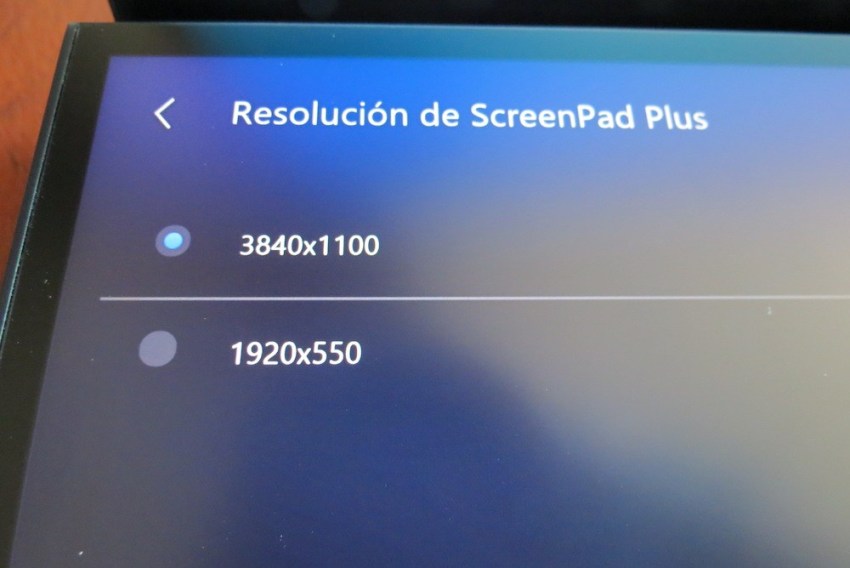
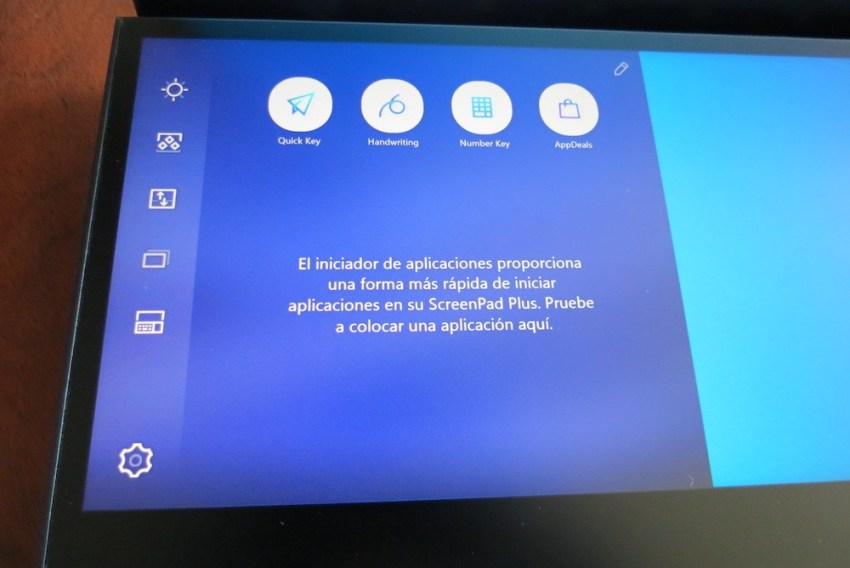
The ScreenPad Plus panel is IPS-type and, unlike the top panel, has a matte coating. Its resolution is 3840 x 1100 as we have already seen, although it can also be reduced by half, and it offers viewing angles of 178º vertically and horizontally.
Temperature
Externally, the temperatures of the Zenbook Pro Duo They are excellent. The hottest point during the stress test has been below 36 degrees, which is on the sides of the equipment, and the keyboard has remained at approximately 25.7ºC, making it possible to use it for hours with demanding tasks and we will not notice heat in our hands.

Things change inside, where during tasks that require high CPU and GPU performance we can reach 81ºC in GPU and 100ºC in CPU. Still, in games it is rare that the graphics card exceeds 80 degrees. The usual values during games with a certain requirement have shown us maximums of the RTX 2060 of about 76ºC, however the processor itself has reached 100ºC, as if nothing.
This makes it appear Thermal Throttling And that, in tasks where multiple cores are used, the Core i9-9980HK has to reduce frequencies to reduce the temperature.
Battery duration
Taking into account the components (especially the two screens), where none is precisely low consumption, and the 71 Wh battery that it integrates, the ASUS Zenbook Pro Duo It offers autonomy that gives for about 3 hours of use in basic tasks such as office automation and navigation.
If we go to more demanding tasks in intensive testing, we have to ASUS Zenbook Pro Duo It has lasted two hours and 18 minutes, a figure that distances it from the most capable models in that regard.
We must not forget that we have to move two 4K screens and that the test is always carried out with the highest possible level of brightness.
performance
The processor is one of the most powerful models that we can find on the market for laptops thanks to its 8 cores, 16 threads and its maximum speed of 5GHz (single core), with a TDP of 45W.
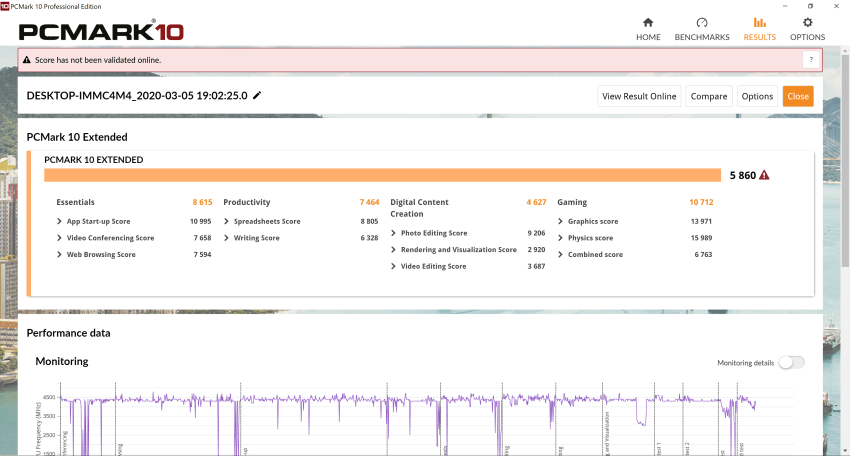
A good performance, and it can be seen in the graph, that the CPU frequency varied throughout the test, something that had been mentioned above.
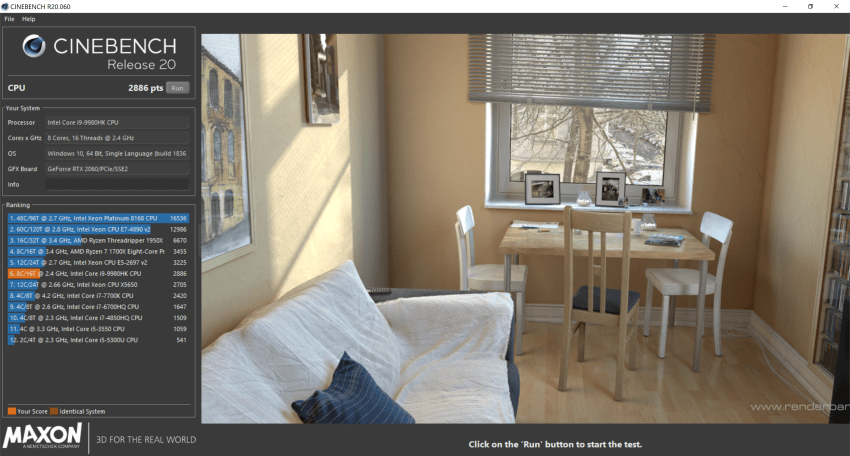
2886pts, not bad for being a laptop CPU, helped a lot by its clocks.
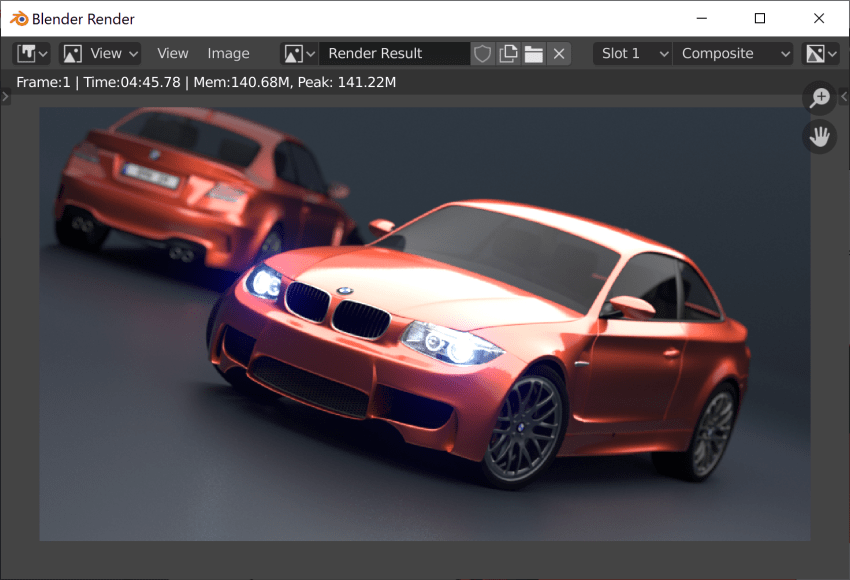
Blender in its BMW render test, gives us a time of 04mins 45secs.
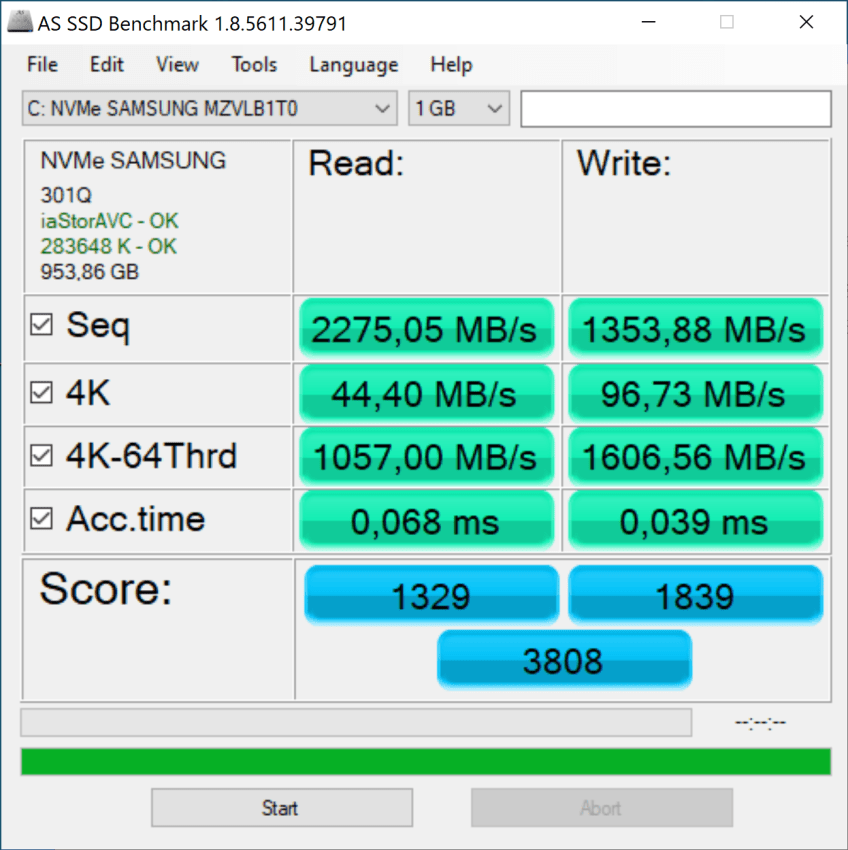
The power of an NVMe PCIe 3.0 x4 SSD, at no time does the computer feel slow.
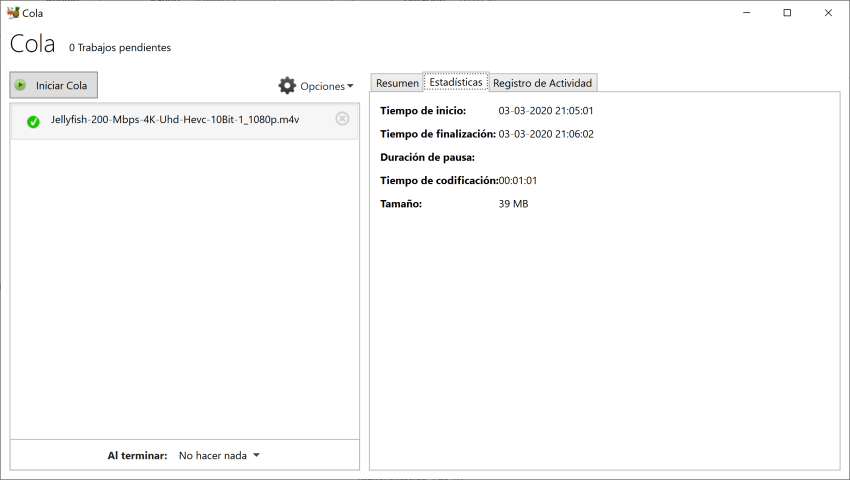
We use Handbrake to encode 4K @ 200Mbps video, from 30secs (750MB) to 1080p. This took 1:01 minutes. Nothing bad.
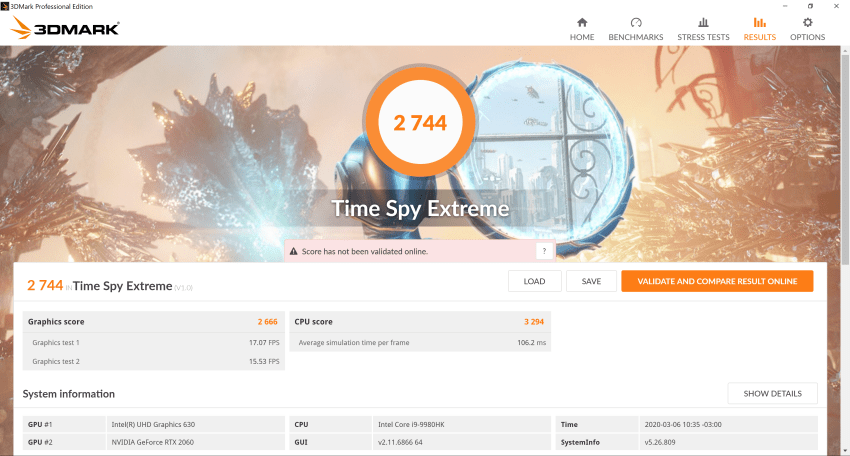
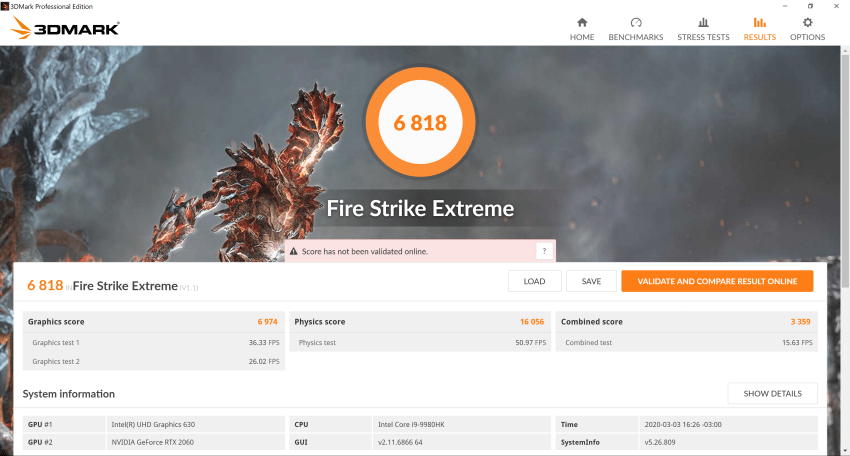
Graphics testing goes hand in hand with what a GeForce RTX 2060 performs.
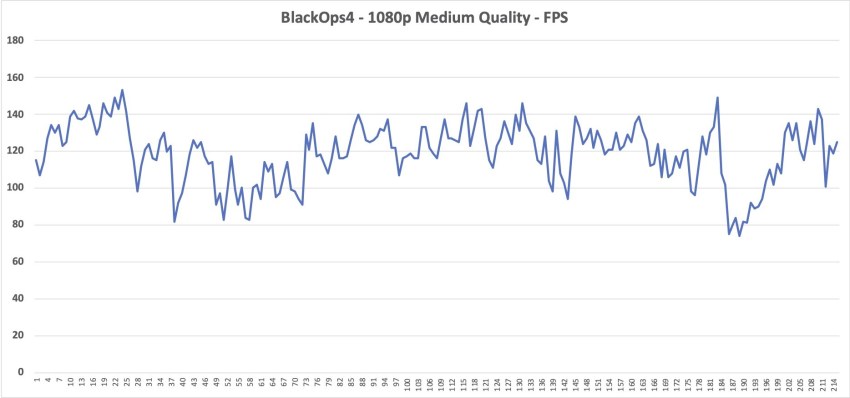
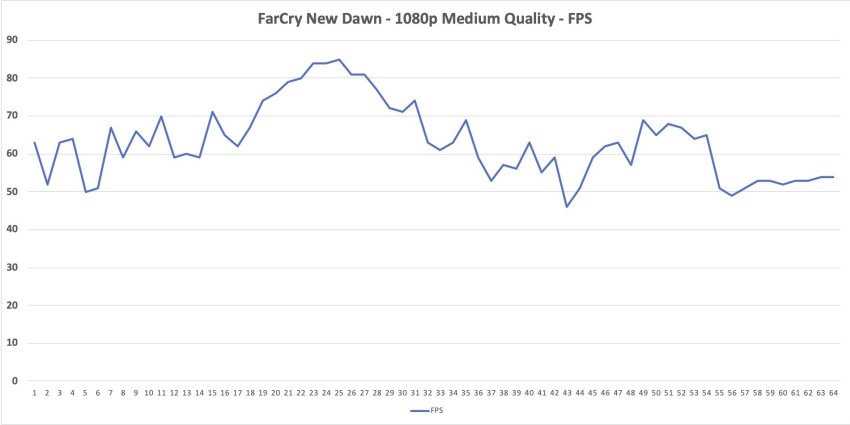
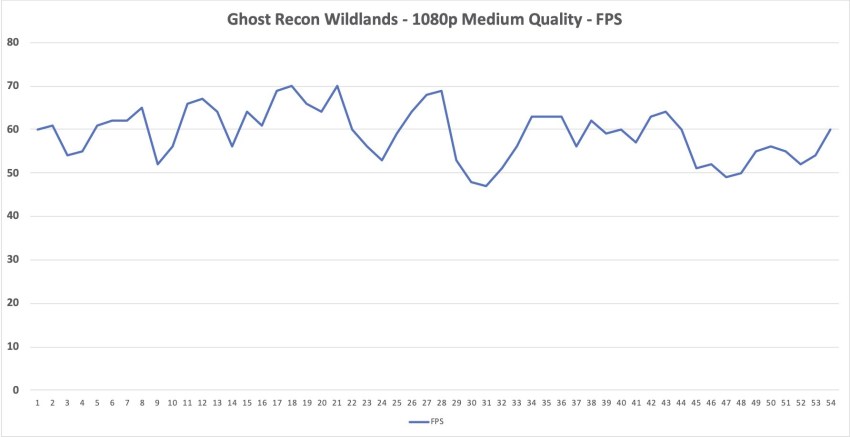
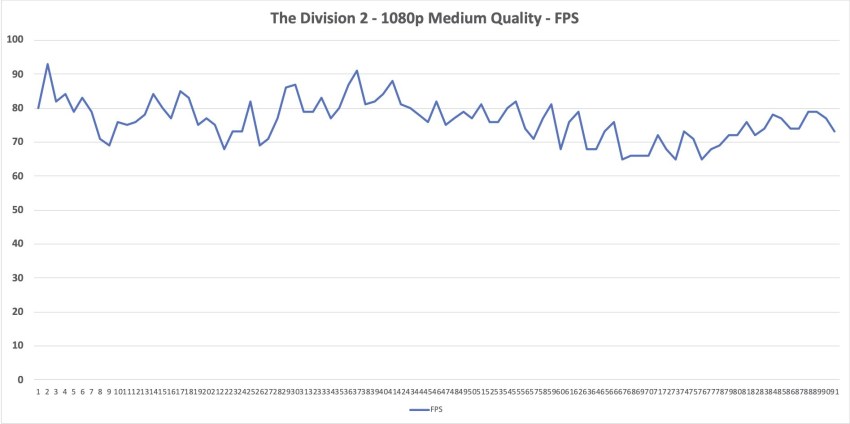
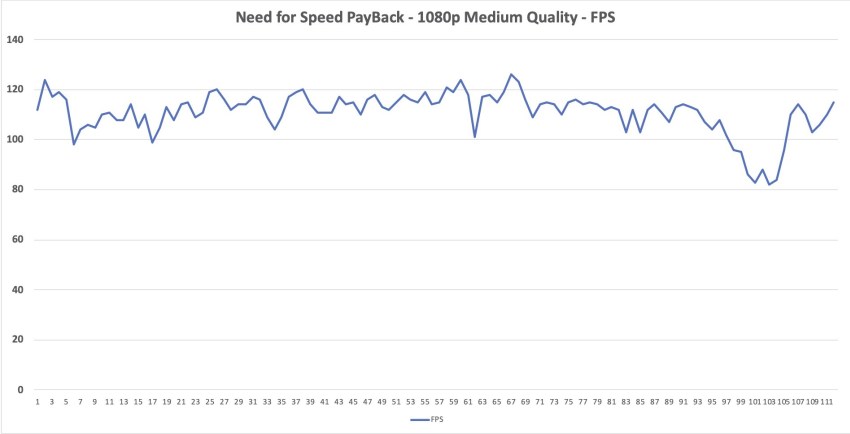
Except for rare occasions, when we get below 60FPS, this team can offer remarkable gaming performance. Virtually all of the games we tested were playable at 1080p, seamlessly above 60FPS or higher.
Final Words
Beyond the own applications, it means having an additional touch screen that extends the desktop, a kind of oversized “TouchBar” and with much more utility than the Apple solution and that avoids having to carry external monitors if we want a machine oriented to mobile productivity.
Possibly the ScreenPad Plus It would also make sense in more modest and finer teams, but ASUS wanted to release it with a premium team where we have an excellent screen OLED 4K As the main screen, a model that is calibrated almost perfectly and offers HDR support with excellent quality.
Now, so much power and so much 4K screen means making sacrifices, the first in thickness and weight, making it not a precisely thin or light device, something to which we must add a considerable size power adapter. The second sacrifice comes in the form of autonomy, since it is necessary to feed the Core i9-9980HK, the RTX 2060 and the two 4K screens, making autonomy not exactly its strong suit.
Also, there are some pretty painful shortcomings in equipment that costs practically CLP $ 3,000,000 Despite its size and thickness, we barely have three USB ports and an HDMI, there is no DisplayPort, no more USB, no card reader, much less a ethernet port, some deficiencies that would be understood in a notebook less than 1 cm thick, but not 2.5 cm.
Beyond its power and specifications, it is on the screens where we find the true jewels of the crown, both with its main 4K OLED panel and with the secondary screen or ScreenPad Plus. It is clear that with its hardware the ASUS Zenbook Pro Duo is a show of strength than, unfortunately, it is out of reach for the vast majority due to its price. However, it possibly paves the way for more modest models with more moderate specs but with this dual screen system.





